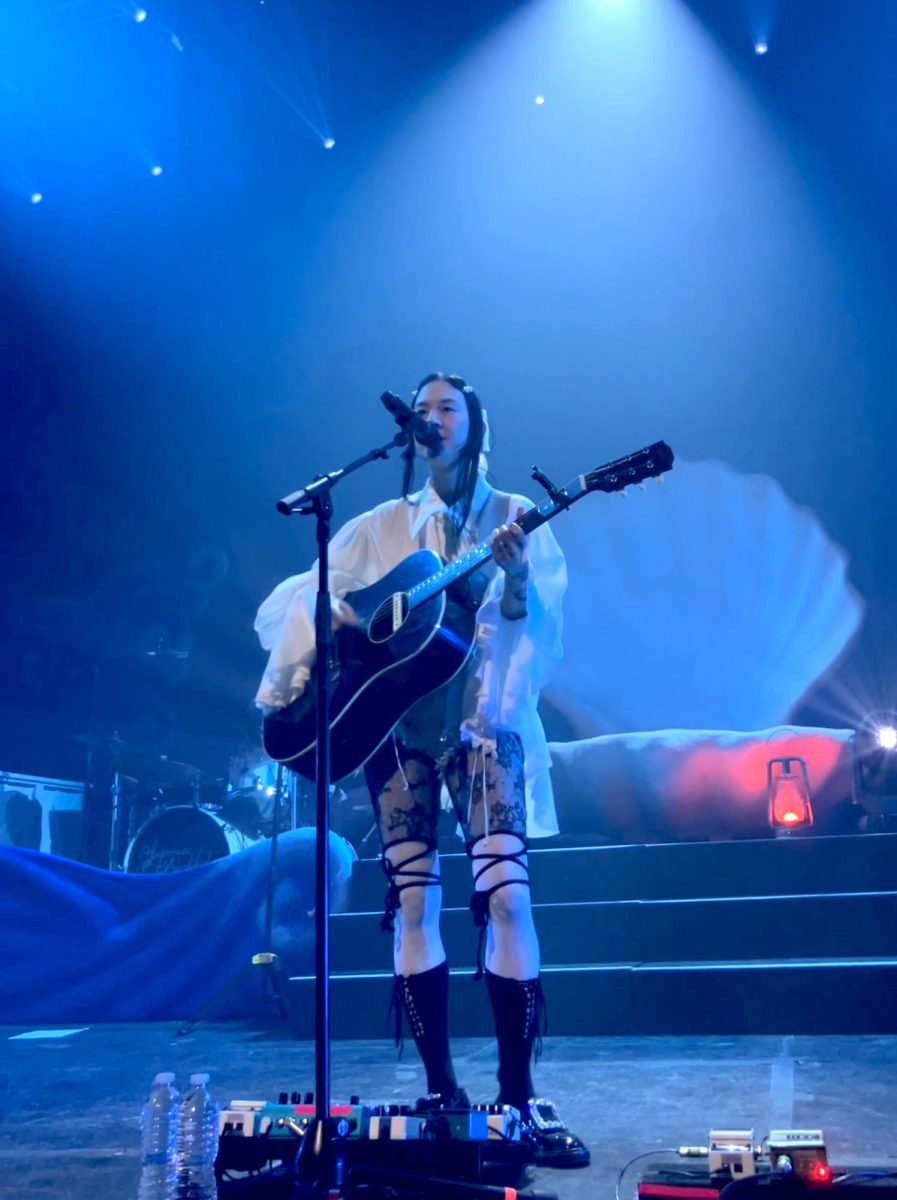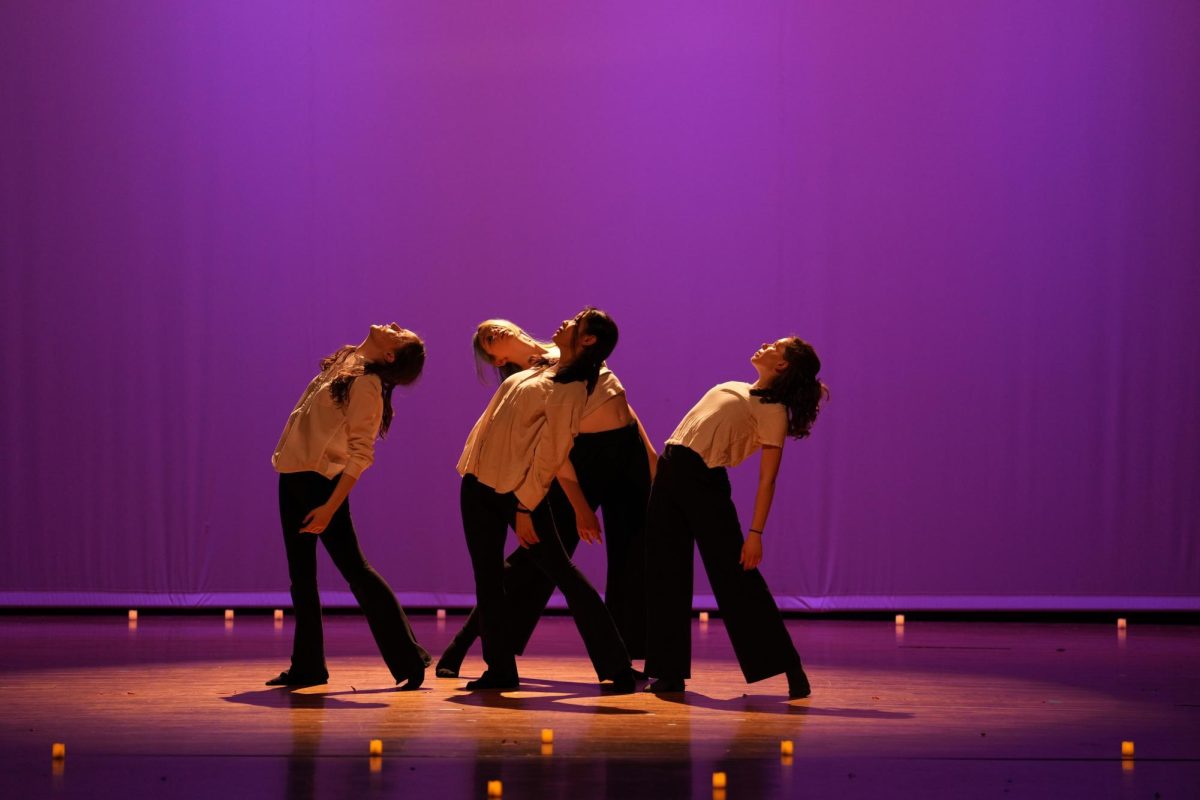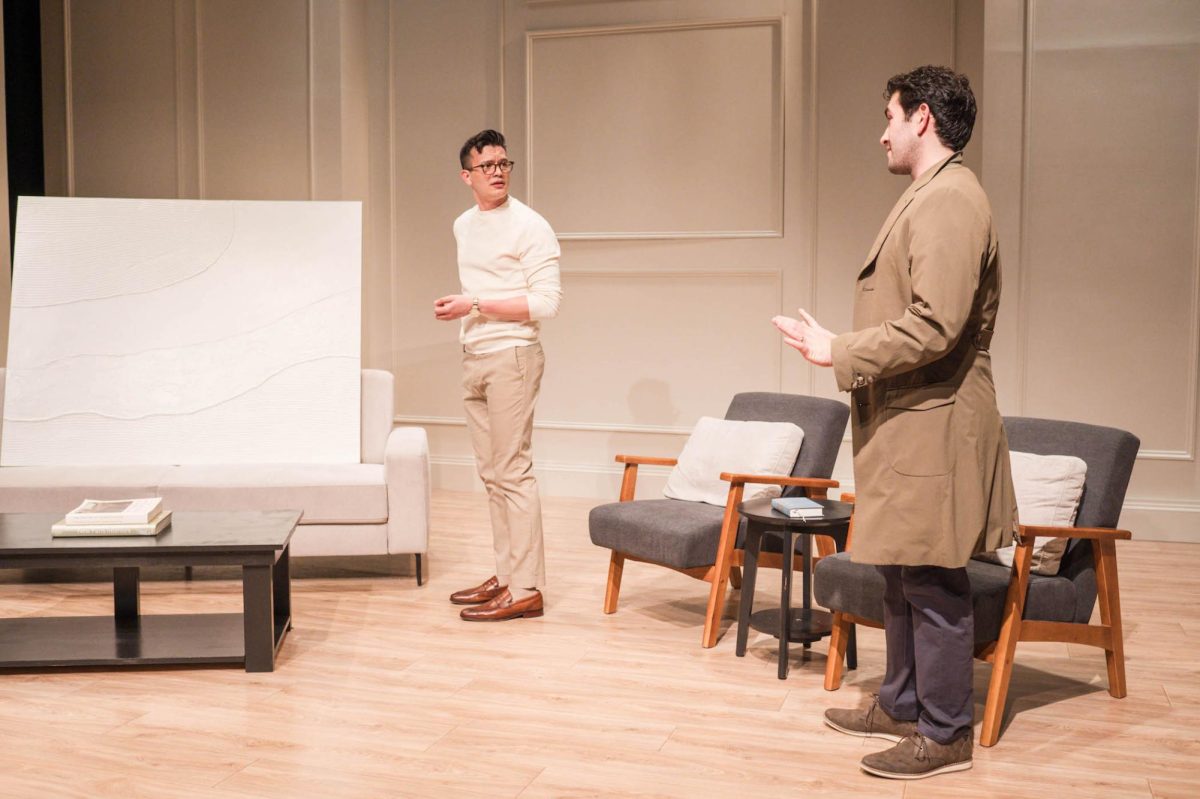There are many places to go in Chicago if you want generic sketch comedy. But few explore the particular humor of student life at the U of C. From hallmarks of student life, like dull professors, all-nighters spent writing papers, and the ideas of Socrates, to presidential speeches, magicians, and video games, the skits in UT’s clever Sketch Show put a comical twist on common student experiences.
For those unfamiliar with sketch shows, imagine sitting in the audience of Saturday Night Live but with the fourth wall demolished and no elaborate set. Do not expect a long, complicated plot that builds to a specific comedic catastrophe and ends in a wedding with everyone learning something. That is a romantic comedy; this is comedy in a purer form. Each sketch is short, ranging from a few seconds to a few minutes. Some have no plots at all, while others have a small one. Characters change from sketch to sketch, as do time periods and realities.
The ensemble cast brings enthusiasm to their parts. Each actor must also play many wildly different characters, a challenge unique to the sketch form. No matter who—or what—they are playing, the actors in Sketch Show are focused on the present moment. Because it is an ensemble show, each performer must in turn lead a sketch or play a supporting character, and UT’s actors play both roles with energy and presence of mind.
The range of topics and the short time allotted for each sketch make it challenging to hold the sketches together in one coherent show. Such cohesion is important because without it the sketches would feel choppy—merely a collection of random events—and the humor could not build because each sketch would have to start completely anew. The cast and crew use several different methods to create a unified production. For instance, several sketches have sequels, allowing the audience to feel that there is a narrative to the show. Some jokes are repeated throughout the show, although not enough to become annoying. For the most part, the actors all wear similar clothing throughout the show, giving it a further sense of cohesiveness, as does the fact that the same actors appear time and time again.
The theater design also helps the show’s humor by creating a suitably relaxed environment. Instead of forcing a distinction between cast and audience as would be appropriate in a more serious production, the theater’s setup softens the divide. In addition to bleacher seats, some tables and chairs are available for the audience to sit in, creating an informal atmosphere. The cast also steps into the audience section, using aisles as an extra entrance or stage space. To further create a relaxed atmosphere, cast members serve Jell-O as people walk into the theater. The set itself consists of a few curtains, a bar, a painting, and a projector. This sparseness allows the actors to quickly create different places because they rely mostly on the audience’s imagination. The lights are used effectively, not just to set the mood, but also to drive along the sketch.
A warning to the faint of heart: Some audience participation is demanded, with and without choice. However, no one is forced to do anything more embarrassing than sit. Some sketches are funnier than others, and some rely on multiple scenes to develop their jokes. The modest should know that scantily clad men make a few appearances. For the people willing to endure these almost inevitable aspects of sketch comedy, the show is entertaining and much better than sitting on a couch, watching Saturday Night Live re-runs.








